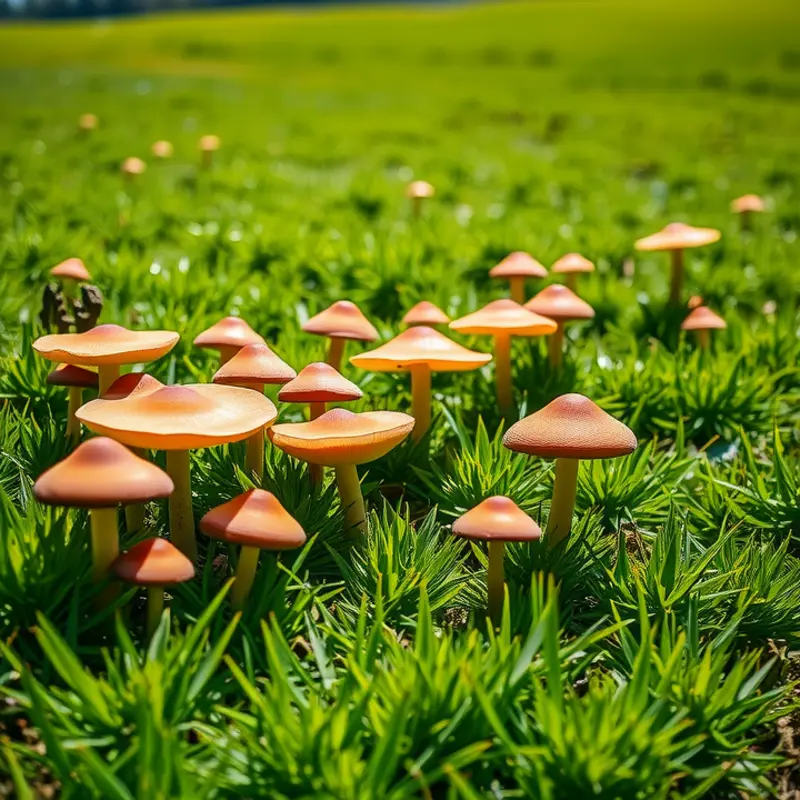Cooking mushrooms properly can elevate any dish, adding depth, flavor, and texture. Whether you’re a novice or an experienced home cook, understanding the nuances of mushroom preparation and cooking will help you maximize their potential. From selecting the right varieties to mastering cooking methods, this guide will walk you through practical tips to enhance your culinary skills and impress your family and friends with delicious mushroom dishes.
Choosing the Right Mushrooms

Understanding different types of mushrooms and how to select quality ones is the first step toward great meals. Among the vast variety, some popular choices include cremini, shiitake, and portobello mushrooms. Each of these offers unique textures and flavors, enriching various dishes with their distinctive characteristics.
Cremini mushrooms, sometimes called baby bellas, are small, brown, and boast a firmer texture compared to button mushrooms. They have an earthy flavor that deepens when cooked, making them ideal for sautéing or roasting. Cremini’s versatility allows them to complement a myriad of dishes, adding complexity to soups, stews, and even pasta.
Shiitake mushrooms, often found in Asian cuisine, are recognizable by their umbrella-like brown caps. They have a dense, chewy texture and a rich, smoky flavor profile. Perfect for stir-frying, shiitake mushrooms can also be simmered to release their depth in broths and sauces. Their robust taste enhances vegetarian dishes by providing an umami punch.
Portobello mushrooms are essentially mature creminis with a larger size and more intense flavor. They offer a meaty texture, making them an excellent vegetarian substitute for burgers or steaks. When grilled or baked, portobellos soak up marinades beautifully, resulting in a juicy and flavorful dish.
Selecting fresh mushrooms is crucial for any cooking endeavor. Look for firm mushrooms with a smooth, unblemished surface. Avoid those that appear slimy or have spots and wrinkles. The aroma is another freshness indicator; fresh mushrooms should have a pleasant, earthy scent. If they emit a sour or fishy odor, it’s best to pass them by.
Proper storage ensures mushrooms maintain their flavor and texture. It’s advisable to store them in a paper bag or a breathable container in the refrigerator to prevent moisture accumulation and mold. Avoid washing mushrooms before storage, as excess water can hasten spoilage. Instead, clean them gently with a damp cloth or a soft brush just before use.
When creating low-carb dishes featuring mushrooms, consider their ability to pair with other robust ingredients. For instance, keto creamy garlic butter chicken recipes can benefit from the earthy notes of mushrooms, enhancing both flavor and texture. Such combinations not only deliver nutritional benefits but also transform simple meals into exquisite culinary experiences. Find inspiration by exploring dishes like those found here.
With an understanding of these varieties, you’re well on your way to utilizing mushrooms as a versatile and flavorful component in your cooking repertoire. Remember, selecting the right mushroom is as important as how it’s prepared, ensuring each dish you create captures its full potential.
Cooking Techniques for Perfect Mushrooms

Mushrooms are versatile in the culinary world, and mastering various cooking techniques can transform them into a highlight of any meal. Each method accentuates different flavors and textures, offering diverse taste experiences. Here, we delve into the art of cooking mushrooms by exploring sautéing, grilling, roasting, and braising.
Sautéing mushrooms is a classic technique that yields a deliciously caramelized surface. Start by choosing mushrooms such as cremini, shiitake, or oyster for their sturdy texture. Clean the mushrooms with a damp cloth or soft brush instead of washing them directly under water to prevent sogginess. Slice them uniformly, ensuring even cooking. Heat a pan over medium-high heat, adding a blend of olive oil and unsalted butter to infuse richness. Once the butter begins to sizzle, add the mushrooms in a single layer to avoid overcrowding, which steams rather than sears them. Stir occasionally until the mushrooms turn golden brown, about 8-10 minutes. Season with salt and pepper near the end to draw out moisture and enhance flavor.
Grilling mushrooms offers a smoky, charred flavor that pairs well with hearty dishes. Opt for larger varieties like portobello or large button mushrooms. Remove stems and brush the caps with olive oil. Place them on a preheated grill, gill side up. Grill for about 5-7 minutes on each side, brushing with more oil as needed. This method creates a robust, earthy taste perfect for salads or as a burger replacement.
Roasting mushrooms in the oven develops deeper flavors through the Maillard reaction. Preheat your oven to 400°F (200°C). Toss whole mushrooms or thick slices with herbs like thyme or rosemary, olive oil, salt, and pepper. Spread them in a single layer on a baking sheet to ensure they roast and do not steam. Roast for 20-25 minutes, stirring halfway through to ensure even cooking. The result is a bold, umami-rich accent for pasta dishes or as a side.
Braising mushrooms involves gently cooking them in a flavorful liquid, enhancing their natural juices. Start by heating olive oil in a pot over medium heat. Add mushrooms along with aromatic vegetables like garlic and shallots. Cook until softened, then pour in broth, wine, or soy sauce. Cover and simmer for 15-20 minutes, allowing the mushrooms to absorb the liquid’s essence. This method results in a tender, juicy side dish that elevates simple grains like rice or quinoa.
Pairing mushrooms with complementary herbs and oils can enhance each technique. Consider a pinch of crushed red pepper for a hint of heat or a drizzle of truffle oil for an aromatic finish. Experiment with classic pairings such as parsley, sage, or garlic, bringing a refined touch to your dishes. For more flavor combinations and inspiration, explore recipes, like a Mediterranean Chickpea Salad which balances well with roasted mushrooms.
Whichever technique you choose, these methods will enrich your culinary repertoire and unlock the full potential of mushrooms in your cooking.
Final words
Mastering the art of cooking mushrooms opens up a world of flavors in your kitchen. By selecting the right types of mushrooms and employing effective cooking techniques, you can elevate any dish and create culinary delights that impress friends and family alike. Whether you use them in pasta, risottos, or as standalone side dishes, the possibilities are endless. Embrace your creativity, experiment with flavors, and never hesitate to add mushrooms to your menu. With practice, you’ll discover how versatile and delicious these ingredients can be.







